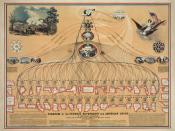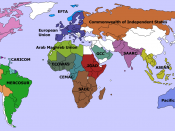Can managers that practice the feminine style of management have a more efficient organization than those of "traditional"ÃÂ managers? Several characteristics displayed by the women interviewed and observed in The Female Advantage lead me to believe that they can. Helgeson gives account, through both day-to-day scenarios and compiled summaries, of the feminine style of management and how it may yield these benefits. I believe that the feminine style, as Characterized by Helgeson's book, lends itself to the more natural way of working for most people, and so I believe this will cause people within that organization to work more efficiently.
In her book, Helgeson discusses one of the major differences between the way men and women managers work in how they distribute their workload through out the day. She states that men tend to work long, continuous stretches, while women tend to work in short forty to fifty minute segments with regularly scheduled breaks in between.
The norm of working a typical 9 to 5 job with continuous multi-hour blocks of work is very familiar to us in The United States, but this is a learned cultural behavior rather than a natural one. Indeed, many other countries throughout the world work in shorter segments, and often times have two or three other breaks besides just the lunch break throughout their day, while they simply work later into the afternoon than the American norm. Japan has become well known for its short "exercise"ÃÂ breaks at the beginning and throughout the day in many of its large organizations. While it is true that their primary motivation for doing this has been to promote a sense of team building, one of the large benefits is that Japanese workers have typically been able to work more efficiently than their American contemporaries, putting a higher...


